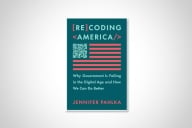You have /5 articles left.
Sign up for a free account or log in.
A week or so ago I mentioned in passing that the dichotomy of transfer degrees and workforce training is a false one: transfer IS workforce. From the comments, it became clear that the point merited more than a parenthetical. It’s a basic truth in its own right, and it’s too often overlooked.
The dichotomy is often presented as if it were an obvious fact, beyond the need for proof. It succeeds as rhetoric because it taps into several related truths. It’s true that students are anxious about jobs. It’s true that the employment path for someone with, say, HVAC training is more obvious than for someone with a history degree. And it’s true that many people harbor lingering resentment against faculty who teach in liberal arts fields, whether because of perceived elitism, perceived political bias, or their own experiences in school. (On a recent episode of “Quiet,” Susan Cain’s new podcast, a teacher commented that in every parent-teacher conference, she’s confronting three people: the child, the parent, and the child that the parent used to be. I smiled in recognition.) With those factors in place, a glib dismissal of courses that aren’t obviously vocational just feels right to many people.
But it isn’t.
Most of the higher-paying jobs in this economy require a bachelor’s degree or higher. For many students, community colleges are the most reasonable on-ramp to those degrees.
The first two years of most bachelor’s degrees contain the “general education” courses that students take before specializing. Those include the liberal arts fields that external critics often disparage. For example, Brookdale just signed a two-plus-two business degree agreement with Rutgers University. As part of the degree, students are required to take -- hold on to your hats, people -- English and history. Those courses aren’t alternatives to the degree, or distractions from it; they’re integral parts of it. Skip them, and you don’t get the degree. They help develop the skills of analysis and communication that employers consistently complain they can’t find.
At the community college level, pre-transfer degrees can look unfocused. But that’s because they’re being taken out of context. They aren’t really meant to stand on their own; they’re meant to be part of a larger whole.
I saw something similar when I was at Williams. Williams is respected as a liberal arts college, and it wears that identity proudly. But when I was there, we were quite clear that it was a feeder for law school, med school, business school, or grad school. We didn’t reject vocationalism; we just postponed it until after the bachelor’s. The solid grounding in liberal arts was understood to be the foundation for graduate work, which, in fact, it was.
The language of “transfer” and “workforce” originated as a kind of shorthand, rather than a basic truth. A more accurate description might have opposed “transfer” to “terminal” degrees, although there, too, many degrees and certificates originally conceived as terminal have become the basis for transfer. Hospitals now push for the BSN for nurses, where once the RN was enough. As degree requirements move up, programs change and adapt.
My message to the politicians who deride liberal arts degrees? You’re solving the wrong problem. Bachelor’s grads do just fine, as a group. People without access to higher education do far, far worse. Don’t shut down the most affordable and accessible entry point.







